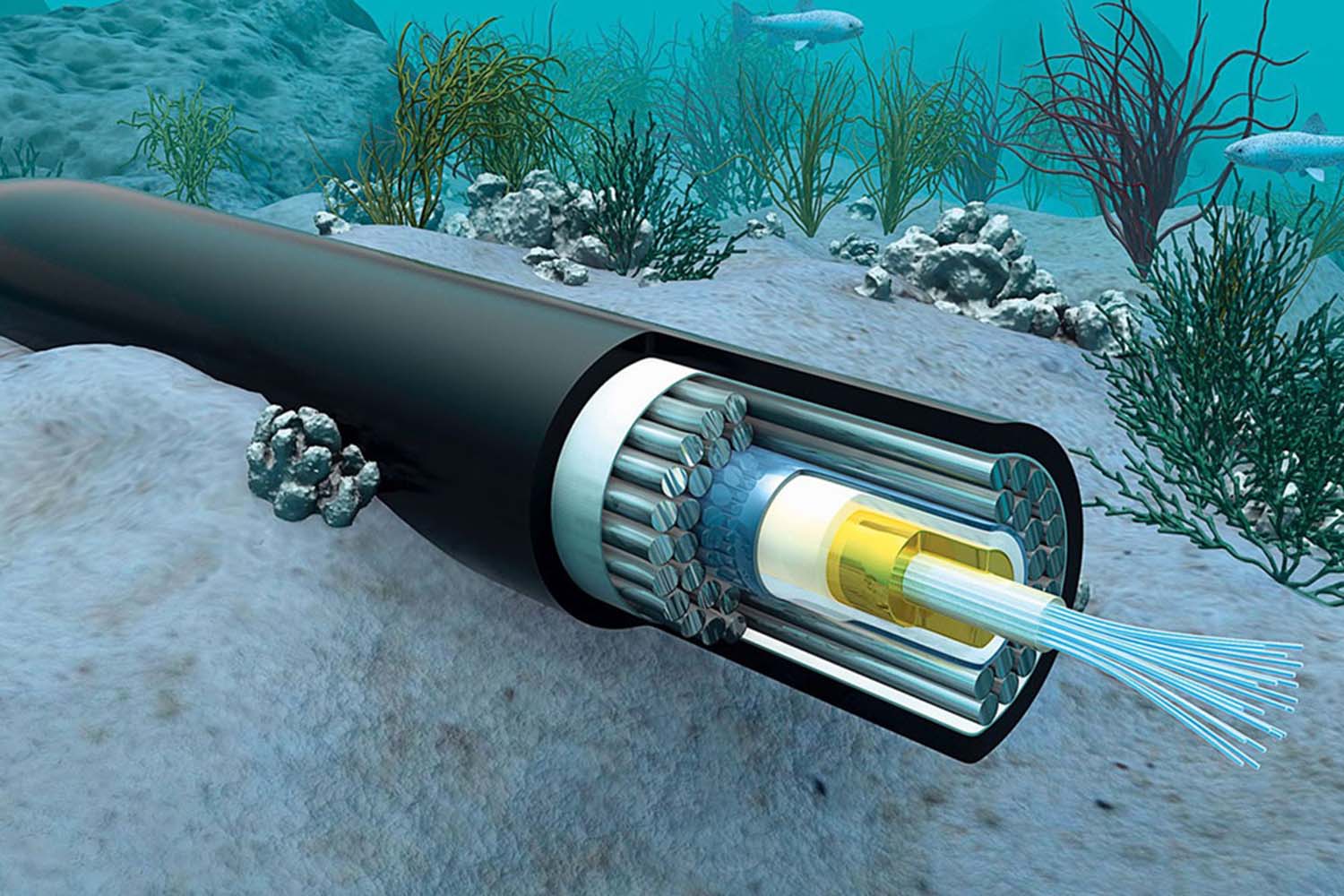
An underwater or Interoceanic cable is that copper or fiber optic cable installed on the seabed and primarily intended for telecommunication services.
However, there are also submarine cables for the transport of electrical energy, although in this case the covered distances are usually relatively small and they are also inserted into a special pipe to avoid risks from contact with water since it handles high powers.
Currently, fiber optic submarine cables are the basis of the global telecommunications network. 1 2 The submarine cable is shown as a robust and effective solution, due to weather resistance, lower latency, and greater bandwidth than satellite communication, all of which positions it as a more reliable and higher capacity infrastructure, Once installed and tested.
Satellite communication has been relegated since the 1990s to the transmission of specific sporting and / or cultural events, the communication of extremely remote sites, and maritime / aeronautical navigation. It takes advantage of the flexibility of being able to “get on the satellite” instantly where the “footprint” of the satellite allows, and even move without losing connectivity, something that the cable cannot give.
The cables are currently not very thick, they can reach the size of a human arm. Paradoxically, the greater the depth, the less mechanical protection is needed, as there is a lower probability of damage to the cable by anchors, trawls, or others. They usually have the optical fibers in the center, plastic coatings, steel cables for mechanical resistance, copper conductors for repeater feeding, and an outer sheath of polyethylene terephthalate to completely isolate it.
And you will be wondering about the capacity of data transmission. Well, hold on to your chair. Neither more nor less than 3,840 giga-bits per second, that is 102 DVD discs in those seconds, this is possible by the optical fiber. A cable consists of 16 fiber threads, therefore 1,700 DVD discs are filled per second, above 60 terabits per second.
Repairing a cable at such depth is impossible, so it is fixed on the surface. Damaged ends are rescued with an underwater robot, and damage is repaired, attached or fixed on board special ships. There are not many ships dedicated to this work
There are several reasons why the cables are damaged, but basically it is because of ship anchors, fishing nets, or fish. The marine fauna can eat the coating of the cables – sharks -, attracted by the magnetic fields. Fortunately, the new cable designs contemplate this problem and reduce the possibility of cuts or complications from these causes.
Other cases that are contemplated are earthquakes. In 2006, one with magnitude 7.0 broke eight wires in the Taiwan area, seriously affecting communications in China. A total of eleven ships spent 49 days working on the repair.
Currently, movement recognition systems are being incorporated in the ocean floor for possible earthquakes, which may lead to something more complicated. It is known that they originate there, so we can count on the speed with which the cable can warn of what is happening, this gives us a very large room for maneuver to prevent situations in cities.
At present, the cables are not protected by the countries and every year there are between 100 and 150 cuts of submarine cables.
This technological marvel allows us to achieve the interconnection we enjoy today.
SOURCE: Wikipedia

